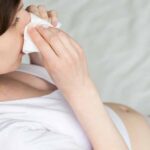It’s that time of year again when seasonal allergies make their presence known. From sneezing fits and itchy eyes to watery noses and post-nasal drip, you know your hay fever has arrived for the season. But what is causing your annoying springtime symptoms? What are the particular triggers that make you feel like you’ve just stepped into a pollen cloud? We have some answers for you here as we delve into all the details about what causes allergies in the spring. So get ready to learn more about this common problem so you can better understand why it affects so many people each year and how best to avoid or manage spring allergy flare-ups!
Overview of Allergic Reactions
Allergic reactions occur when the body’s immune system overreacts to a foreign substance or allergen. According to Dr. Jasdeep Sidana, allergies are common and are estimated to affect up to 40% of people worldwide. Symptoms vary depending on the severity of the reaction and can range from sneezing and itchy eyes to fever and hives to anaphylaxis which requires an emergency medical response.
Dr. Jasdeep Sidana emphasizes the importance of getting properly tested and following the recommended treatment plan to mitigate potential risks and help individuals better manage their allergies. With the proper knowledge, tools, and techniques, Dr. Jasdeep Sidana believes anyone living with allergies can have an improved quality of life with proper management.
Causes of Springtime Allergies

Springtime allergies can seem like a plague, but knowing what triggers them can be easier to handle and treat symptoms. Three of the primary causes of springtime allergies are:
Pollen from Trees, Grasses, and Weeds
Trees, grasses, and weeds are the primary pollen sources during the springtime allergy season. This nuisance can severely impact those who suffer from allergies, resulting in nasal congestion and other uncomfortable symptoms. In addition, allergic reactions in humans can be triggered by airborne pollens collected from these plants or direct contact with their flowers, fruits, or leaves.
In fact, the pollens produced by trees, grasses, and weeds can travel up to 400 miles through wind currents. Therefore, knowing which types of plants produce higher amounts of pollen and how to prevent an allergic reaction are essential steps when managing allergies during the pollen season.
Mold Spores
Mold spores are among the most common allergens in all parts of the world, thriving in warm and damp environments. According to Dr.Jasdeep Sidana, the health implications these omnipresent organic particles can have on humans are vast, from mild nasal congestion to more severe respiratory infections. With a potential trigger for allergies and asthma, residents need to be aware of areas where mold is likely to congregate, ranging from bathroom and kitchen corners to the basement crawlspace.
Knowing signs like musty odors or discoloration is essential in recognizing where spores may flourish, allowing us to take early and proactive measures against further growth. Despite the difficulties of dealing with mold, regularly checking your space and utilizing products proven to reduce these particles can ensure cleanliness and safety for all households.
Dust Mites
It may come as a surprise, but dust mites are technically arachnids and can cause severe allergies. In an average home, there could be anywhere from 100,000 to 10 million dust mites present! Furthermore, Dr.Jasdeep Sidana elaborates that dust mites love warm and humid environments, and you can often find them in mattresses, pillows, carpets, furniture, and soft toys. They feed off loose skin cells, so they prefer the heavier-use areas of your house. The proteins found in their excrement can trigger allergic reactions, such as watery eyes, itchy noses, coughing, or wheezing. Despite their adverse effects on humans, dust mites can help break down organic material like dander and bacteria and should not be removed entirely as they serve some purpose in your home environment.
How to Reduce Exposure to Allergens?
Allergic reactions can range from mild to life-threatening. Thus it is essential to limit exposure to allergens to reduce the chance of a reaction. But, of course, there are a few steps that individuals can take to reduce their exposure and make their homes a safer environment, as emphasized by Dr.Jasdeep Sidana.
- First, it is essential to know the source of allergens such as pollen, mold, and dust mites.
- Make changes within the home to reduce or eliminate them. This may include changing air filters in air conditioning systems more frequently, improving home ventilation by opening windows on pleasant days or getting an air purifier.
- Minimize items that collect dust, like pillows and paper-related materials, may also help reduce exposure.
Other steps include:
Limit Outdoor Activity During Peak Pollen Hours
Dr.Jasdeep Sidana, MD, warns of the dangers of too much outdoor activity during peak pollen hours. According to Dr. Sidana, one could be severely impacted by allergens when enjoying the outdoors at peak pollen levels. Therefore it is best to limit activity to a minimum during this time frame. In addition, Dr. Sidana notes that those with asthma or hay fever should take extra precautions outdoors as their breathing capacity may be compromised by particles in the air that might trigger an attack. He also encourages anyone sensitive to irritants in the air to check local forecasts for allergen levels before venturing out and remain indoors if possible until the situation improves; it may be best to exercise or spend time outdoors around dusk or dawn when pollutant levels are lower.
Keep Windows Closed on High-Pollen Days
The high pollen count days can be a nuisance for most, especially those with allergies or asthma. For many, the first instinct is to crack open windows to cool down. Unfortunately, this risks introducing potential allergens into your indoor environment and triggering allergy symptoms. Thus, if you know that pollen counts are high, it’s essential to keep the windows shut and opt for other cooling options, such as air conditioning instead. In addition, keeping up with regular cleaning habits such as vacuuming and dusting can help keep your home free of airborne particles that may worsen symptoms.
Wear Masks for Outdoor Activities
When engaging in outdoor activities, wearing masks is necessary to protect yourself and others. This is especially important in a public space, as it can help prevent the spread of germs and potential respiratory viruses or illnesses. It’s recommended to wear non-medical masks or face coverings that fit securely over your nose, mouth, and chin when going outside for any reason. Not only do these assist in preventing the spread of any airborne particles, but they can also remind us to remain mindful of our environment. In addition, wearing one allows us to demonstrate respect to people around us, demonstrate everyday appreciation for essential medical personnel on the frontline battling the virus, and cultivate a shared faith that things will eventually return to regular times.
Treatments for Allergies in the Spring

Allergy season has arrived, and when the weather starts to warm up, many people suffering from seasonal allergies may struggle. From sneezing fits itchy eyes, symptoms can flare up at any moment—but they don’t have to take over your life. Understanding what triggers your allergies and using the proper treatments is essential in managing your symptoms this spring. Many approaches are available, from over-the-counter medications like antihistamines to allergen-immune therapies that help desensitize your body to specific allergens. Please speak with a healthcare professional or allergist about what options may be best for you, as everyone’s needs will vary depending on the severity of their allergies. Taking charge of your health can make allergy season less severe and more bearable this spring and beyond.
Conclusion
Seasonal allergies can be challenging to manage, but Dr. Jasdeep Sidana encourages people with allergies or asthma to take the necessary precautions to ensure their safety. For example, individuals should strive to limit outdoor activity during peak pollen hours and keep windows closed on high-pollen days to reduce exposure. Additionally, wearing a face mask when engaging in outdoor activities can help protect against airborne particles. Lastly, seeking medical advice can help you find the best treatment plan for your allergies this spring.


